| |
Ernestina Dallagiacoma
Skiing as an emotion and way of life
Cristina Maffei Suomi
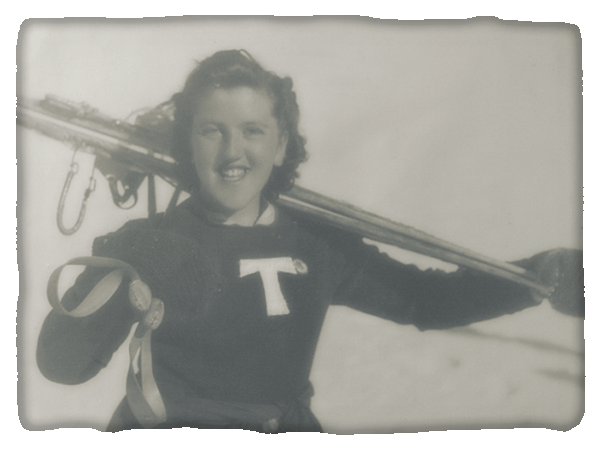
I have always considered people who set up interviews in a bar, hotel reception area or worse, "in between" other jobs, as aloof and impersonal. When an interviewee invites you to his home, you know that that spontaneous involvement and that desire to reveal himself have already been sparked, essential in establishing a mutual rapport of sincere communication.
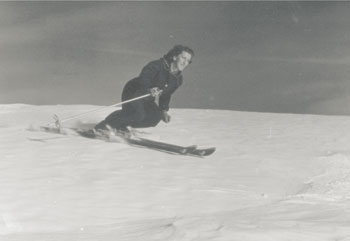 Thus, even before meeting her, I had the distinct feeling that our meeting would have led to a pleasant, lively and, especially, emotional conversation. Only later did I understand that another one of my existential assumptions was being met: that there are people in the near and far corners of the world who have never met but who have always been in touch with our heart of hearts since they have the same feelings, passions, attitudes and sensations on life. Thus, even before meeting her, I had the distinct feeling that our meeting would have led to a pleasant, lively and, especially, emotional conversation. Only later did I understand that another one of my existential assumptions was being met: that there are people in the near and far corners of the world who have never met but who have always been in touch with our heart of hearts since they have the same feelings, passions, attitudes and sensations on life.
Ernestina Dallagiacoma’s house is high up, at the edge of the woods, and seems to mark the border between the natural and high-society elements of modern-day Madonna di Campiglio.
It stands where she, still a young girl, decided to build it as the core expression of her personality rooted in the mountainside, already full of enthusiasm for the novelties on the verge of overtaking this sleepy, original village in the Dolomites.
And while telling me about her siblings' support, the skis built by her father and the first ski lift to Belvedere, her eyes, shining and lively, light up.
The description of those first rudimentary skiing accessories and techniques radiates that passion and that exuberance that have always accompanied her. 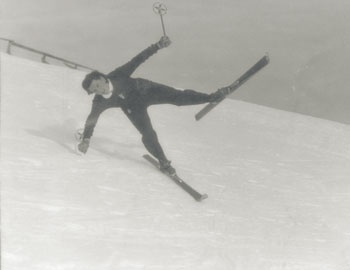
Her confident voice and careful and attentive language, remnants of those trying years at boarding school, tell the tale that no longer needs prompting.
Her memories fully express her distinction between the past and present.
“The difficulties following the World War seemed unsurpassable. After my father returned from the prison camp, my mother died and I needed to quickly, although prematurely, become independent. Thus I decided to get in shape for what would become my raison d’être: skiing. I practiced a lot. On September 27th in 1933, only eleven years old, I climbed the Campanil Basso and began teaching those first, rare tourists and, giving it my all, I passed the Fisi exam in 1947 in Cervinia. I always loved working with children, even young ones, helping them in both their athletic and individual growth. I understood them and encouraged them but I also required dedication and perfection from them. Over the years I built my own efficient teaching system based on the meticulous explanation of single movements, step by step in slow motion, almost a modern replay to let students see, assimilate and copy the various positions. Even when challenged by the difficulties of a demanding run I spurred my pupils to face it with audacity without 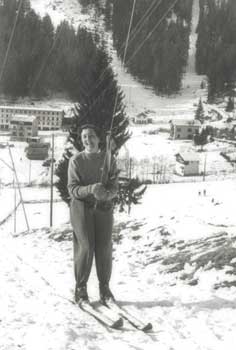 ever risking it, with a clear mind and the will to succeed. ever risking it, with a clear mind and the will to succeed.
To convey my knowledge I even perfected a teaching philosophy based on will, on severity accompanied by fun, but especially on human relationships that continued even after the mere lesson. This is why many invited me to ski with them elsewhere and I was privileged to discover other places and other mountains.”
Her words smolder with a lenient indulgence but also with the demand for a discipline which transfers from sport, with its principles and values, to every day life creating not just athletes or champions but men and women. Ernestina has dedicated more than seventy years of her life to skiing. She was a modern luminary in the history of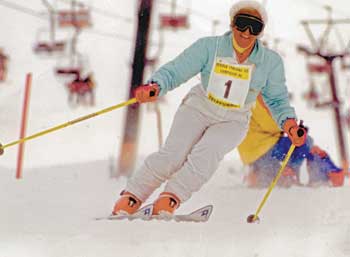 Campiglio, with its intense and numerous changes and the evolution of mountain culture. She still wants to fully enjoy what she helped to build and what her town, modern and hectic, can still offer her. Campiglio, with its intense and numerous changes and the evolution of mountain culture. She still wants to fully enjoy what she helped to build and what her town, modern and hectic, can still offer her.
I can only hope that the wind, snow and strength of our mountains carve my face in the future to give me wrinkles like hers, seemingly rough but deeply engraved with tenacity and peacefulness, typical of those who have experienced and internalized the mountain existence.
|
|